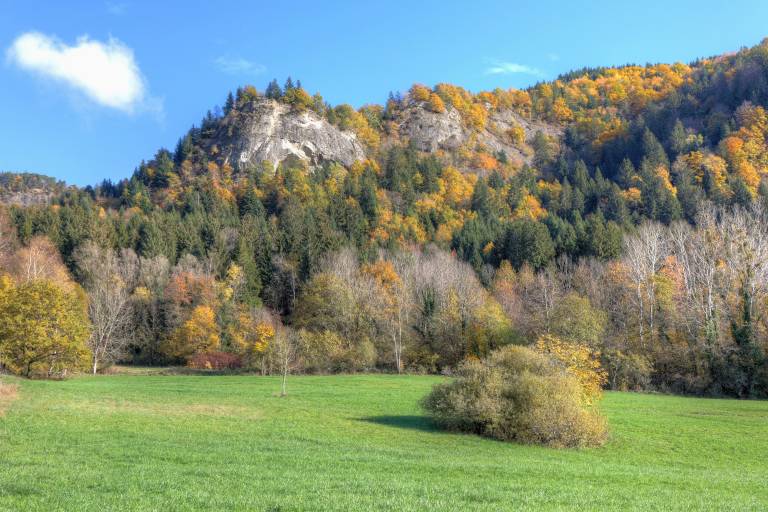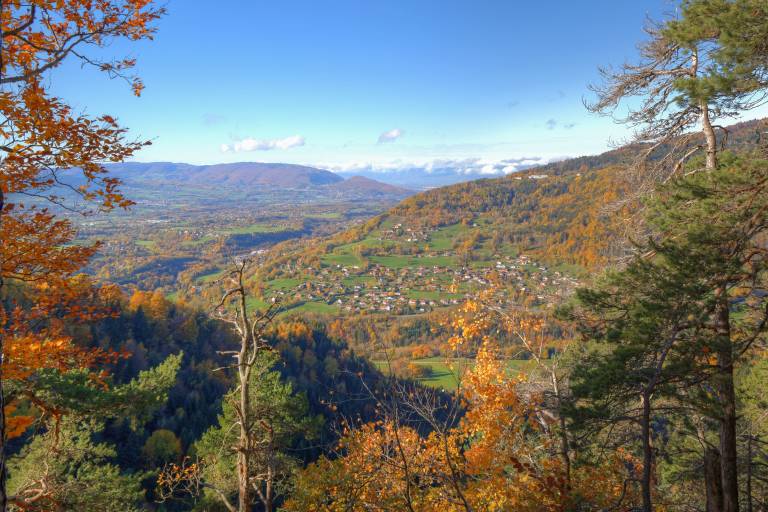Mount Vouan


1 / 9
Description
Mont Vouan is a small mountain range with an altitude of 978 metres. Located between Les Brasses and Les Voirons, it is part of the Chablais Pre-Alps.
Its distinctive feature lies in the siliceous nature of its soil, which has enabled nearly 600 plant species (some of them rare) to grow there. Its fauna is equally diverse: more than 200 species have been recorded, including mammals, birds, reptiles, fish, amphibians and insects.
Historically, the site is famous for its millstones, a place where millstones were extracted for use in grinding rye, barley and other grains into flour. A one-tonne millstone could produce several hundred kilos of flour every day. It should be remembered that our ancestors ate more than a kilo of bread a day !
In the past, a millstone was worth the price of a house, so places were highly sought after. While not everyone could afford to cut a millstone, finding a place to cut it was even more difficult!
The extraction of a millstone took place as follows:
The millstone was marked out on the wall and a groove was dug around it. Fir wedges were driven into the groove and regularly wetted. The swelling of the wood detached the millstone by breaking the stone.
The millstone extraction site at Mont Vouan was extremely important, as it was one of the largest in south-eastern France, producing more than 200,000 millstones from 72 quarries.
At the foot of the Vachat millstones quarry lies the Pierre aux Morts or ‘Gouille aux Morts’ marsh, which serves as a reminder of how difficult it was to cut millstones, as the stonecutters often took great risks. The pond was named after the fall of two stonecutters while they were working on a Sunday (the Lord's Day !).
Mount Vouan was also crossed by a smugglers' path. The smugglers brought wheat from the Pont Morand mill to Geneva and returned with alcohol, tobacco and other goods.
Today, you can still see large round holes nearly 2 metres high in the rock where the millstones were extracted. They are part of the ancient Meulières à Vachat and Grand'Gueule sites, which have been classified as a ‘Historic Monument’ since 2009 and a ‘Sensitive Natural Area’ since 2017.
PAYSALP offers tours for groups throughout the year.
Information and reservations: www.paysalp.fr
Pricing
Free access.
Langues
74250, Viuz-en-Sallaz
Open every day.
